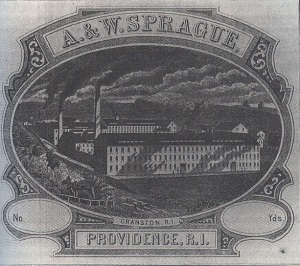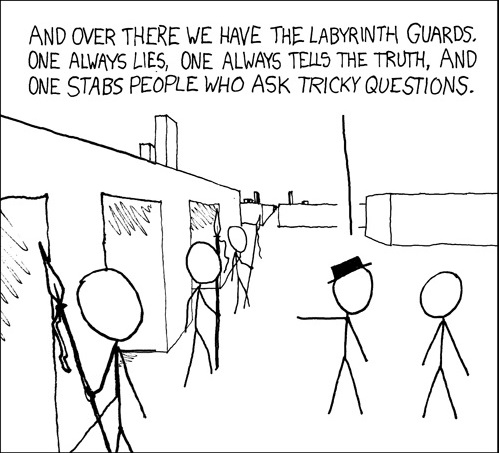
Spend any time in Rhode Island and you quickly learn a few things: It’s not an island; it would appear to have the most corruption per capita outside of Sicily; and for such a small entity the Ocean State has more than its fair share of interesting stories.
Consider that Rhode Island hasn’t executed anyone in more than 170 years. Part of the reason is that the last man to die at the hands of the state was almost certainly railroaded, a victim of anti-Irish, anti-Catholic, anti-immigrant bigotry that was prevalent in many areas of the United States into the 20th century.
This particular story begins on Dec. 31, 1843, when textile magnate Amasa Sprague finished supper at his Cranston, RI, mansion and went for a walk. Sprague was powerful both in physique and prominence.
He was a New England Brahmin, and together with his brother William owned a textile business started by his father William Sprague Sr. The Spragues owned several cotton mills in Rhode Island, but their most profitable factory was the print works in nearby Spragueville, which printed calico patterns on cloth.
The A & W Sprague Co. employed most residents of Spragueville, owned the tenements they rented and the company store where they shopped. He was a man to be feared.
During Sprague’s after-dinner walk, he was accosted by at least two individuals. He was shot in the right wrist and struck with a blunt instrument in the left side of his head, then his right. Despite desperate attempts to fight back, Sprague was overcome and killed.
There was no shortage of potential suspects, according to the New England Historical Society.

Logo of A & W Sprague Co., showing Cranston, RI, textile plant.
There was talk that the murder was politically motivated. The previous year, an individual named Thomas Dorr had been arrested for a failed attempt to force broader democracy in Rhode Island by setting up a rival government that would expand the vote to all adult white males.
Still governed by the state’s 1663 colonial charter with its relatively high property requirement for suffrage, Rhode Island allowed only white, propertied men – about a third of adult male population – to vote. The Irish, who were nearly all disfranchised under the colonial charter, strongly supported the Dorr Rebellion.
Sprague, like many wealthy white males, benefited from the system in place and, along with his brother William and brother-in-law Emanuel Rice, helped orchestrate Dorr’s downfall. Some speculated that supporters of Thomas Dorr, who would later be found guilty of treason against the state, assassinated Amasa Sprague, according to the New England Historical Society.
Others looked closer to home. William and Amasa Sprague apparently disagreed about what direction the family business should take. William wanted to expand the company beyond Rhode Island, while Amasa was content to continue the business at its current size and profitability. Neither man had a reputation for backing down when they didn’t get their way.
Suspicion also fell upon Nicholas Gordon, a tavern owner whose establishment was frequented by Sprague’s millworkers, much to Amasa Sprague’s displeasure.
Gordon’s tavern was attached to his home and was located in a section of Cranston, which, in the decidedly indelicate sensitivities that were prevalent in 19th century America, was nicknamed “Monkeytown” because of its Irish population.
“Amasa Sprague had successfully fought against renewing Gordon’s liquor license because, he said, his Irish millworkers were getting drunk during work hours and neglecting their jobs,” according to the New England Historical Society. “Gordon and Sprague had fought publicly. Sprague and Gordon had once met on a path and neither refused to give way. Finally Sprague grabbed Gordon by the collar and shouted, ‘Get out of the way, you damned Irishman!’”
The entire case was a fiasco from beginning to end. William Sprague resigned his senate seat to supervise the murder investigation, an apparent conflict of interest.
Not only was Nicholas Gordon quickly arrested, along with his younger brothers, John and William, the Gordon’s mother and a friend of Nicholas’ named Michael O’Brien – because everyone knew the Irish always stuck together – but the Gordon’s dog was apprehended, as well. (The dog was later described by a defense attorney as toothless and old.)
William and John were tried first, with the Irish community rallying behind them and raising funds for their defense.
Ultimately, it was 29-year-old John Gordon, recently arrived from Ireland to join his brothers Nicholas and William, who took the fall for the crime. William was found not guilty, but John was found guilty despite a conviction based on contradictory circumstantial evidence.
How badly were the cards stacked against John Gordon?
In trials held at the then-Rhode Island Statehouse, Presiding judge Job Durfee told jurors to give greater weight to Yankee witnesses than Irish witnesses. He added that they did not have to believe anything that the Irish witnesses for the defense said because they were by their nature unable to tell the truth, according to a 2013 report on the sordid affair by the Cranston Herald.
In addition, Henry Bowen Anthony, the editor of the Providence Journal, the leading news source for Rhode Island at the time, provided the public with plenty of “facts” about Gordon’s guilt, even though many were asserted without a shred of truth to them, the Herald added.
One of the pieces of evidence that convicted John was a broken gun found near the body of Amasa Sprague. Nicholas was known to own a gun, but it couldn’t be found in his house, so it was assumed the broken gun was his. After the trial it was discovered that William had hidden Nicholas’ gun under the attic floorboards, according to the New England Historical Society.
Nicholas was tried later, but he had an alibi and the witnesses who convicted his brother were suddenly unsure of their memories. His trial ended in a hung jury. His gun turned up just before his second trial, which also ended in a hung jury.
John Gordon was hanged on Feb. 14, 1845, in Providence. His last words were, “I hope all good Christians will pray for me.”
Many believed he was innocent and the victim of a legal lynching. Some 1,400 Irish came from Rhode Island, Connecticut and Massachusetts for his funeral. The procession took a detour to pass the Statehouse and the homes of the Yankee elite.
Seven years later, the Rhode Island legislature banned capital punishment, in part because of the travesty of John Gordon’s trial.
In 2011, 166 years after John Gordon was hanged by the state of Rhode Island, Gov. Lincoln Chafee pardoned him.
“John Gordon was put to death after a highly questionable judicial process and based on no concrete evidence,” Chafee said in 2011. “There is no question he was not given a fair trial.”
(Old Rhode Island Statehouse, Providence, where John Gordon and his brothers were tried for the murder of Amasa Sprague.)











